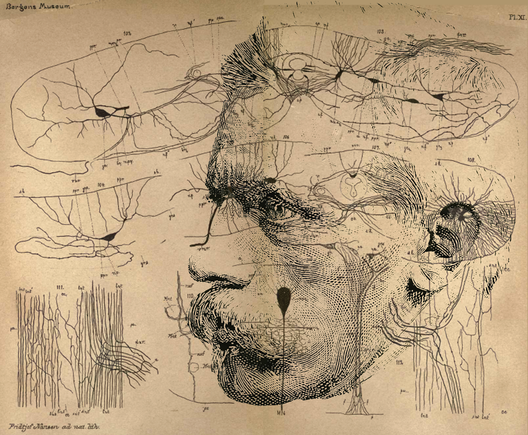Fridtjof Nansen1861–1930
Nansen spent a relatively short period as a neuroscientist but he made his mark during the years of his doctoral research. He was encouraged to pursue histology and this he did with verve and vigour. After completing his studies at the University of Oslo, he conducted his research as curator of zoology at Bergen Museum. His initial frustration with cell preparations resulted in him travelling to see Golgi and to learn the technique of the black reaction. On his return to Bergen he applied the stain to vertebrate and invertebrate nervous systems, culminating in his thesis The Structure and Combination of Histological Elements of the Central Nervous System (1887). His portrait is combined with Plate XI from his thesis. The beautifully detailed drawings were chromo-silver stained nerves from the spinal cord of hagfish. As he wrote “The illustrations are drawn under the camera lucida directly upon the stone”. Nansen was a staunch supporter of Cajal’s nerve theory as opposed to Golgi’s reticular concepts, largely because he could not envisage how unipolar nerve cells could be accommodated in reticular theory. Nansen left neuroscience to pursue his love for exploration of the frozen wildernesses to the north of Norway. He later became a diplomat and was awarded the Nobel Peace Prize in 1922.
